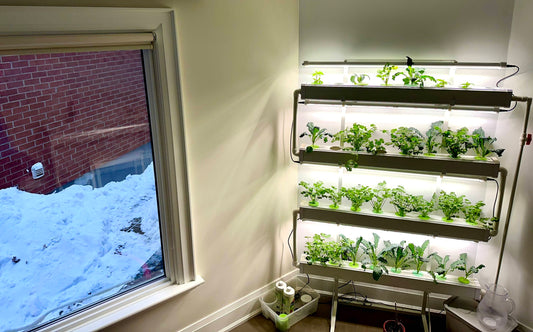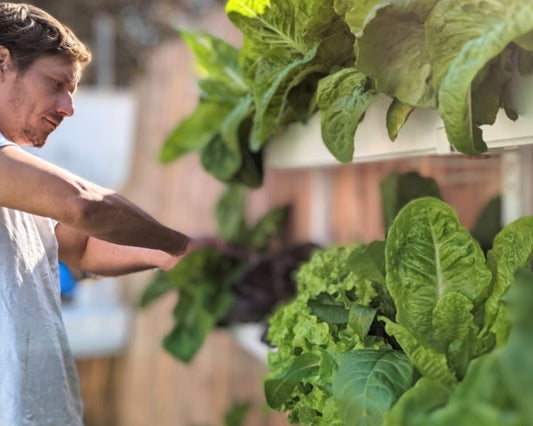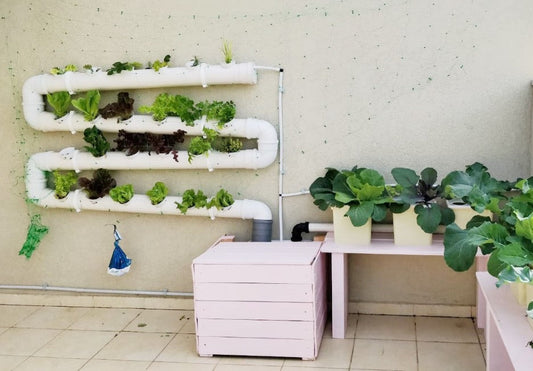Hydroponic gardening is an innovative and efficient way to cultivate plants without soil, offering faster growth and higher yields. However, for plants to thrive in a hydroponic system, three critical factors must be maintained: the right environment, balanced water, and proper care. Whether you're a beginner or an experienced grower, understanding these fundamentals is essential for a flourishing hydroponic garden.
1. The Right Environment: Creating Optimal Growing Conditions
Plants don’t mind whether they are grown indoors, outdoors, or in a greenhouse, as long as they receive the appropriate environmental conditions. Setting up the right environment ensures strong plant development and prevents common issues such as stunted growth and diseases.
Airflow and Ventilation
Proper airflow is crucial for preventing stagnant air, which can lead to mold, mildew, and disease. It also helps replenish CO2, ensuring efficient photosynthesis. In enclosed hydroponic systems, using exhaust fans or air circulation fans can maintain healthy airflow.
Humidity Levels
Maintaining optimal humidity levels supports transpiration and enhances nutrient absorption. Most hydroponic plants thrive in a humidity range of 50% to 70%. However, excessively high humidity can encourage mold and fungal diseases, while too low humidity may cause plant stress.
Light Exposure
Sufficient direct light is essential for photosynthesis and healthy plant growth. Natural sunlight is ideal for outdoor systems, but for indoor hydroponics, artificial grow lights should provide the right spectrum to promote photosynthesis and development.
CO2 Levels
CO2 is a key factor in photosynthesis. While plants naturally receive enough CO2 in open environments, sealed indoor setups may require CO2 supplementation to boost growth and yields.
Temperature Control
Maintaining the right temperature is essential for plant metabolism. Ideal temperatures range from 65-75°F (18-24°C) for most hydroponic crops. Warmer temperatures accelerate growth but may reduce oxygen levels in the water, while cooler temperatures can slow metabolism.
Note: If you’re growing hydroponic plants in your home and they are standard vegetables adapted to room temperatures, there’s no need for strict environmental controls. However, if your system is in a sealed space with a high density of plants, regulating CO2, humidity, and temperature becomes necessary for precise growth management.
2. Balanced Water: The Foundation of Hydroponic Growth
Water quality is a defining factor in hydroponic gardening. It serves as the medium for delivering nutrients directly to the plant roots, making its balance essential for plant health.
pH Balance
Maintaining the correct pH range ensures that plants can absorb nutrients efficiently. Most hydroponic plants thrive in a pH range of 5.5 to 6.5. A pH that is too high or too low can result in nutrient lockout, leading to deficiencies.
Electrical Conductivity (EC) Monitoring
EC measures the concentration of nutrients in the water. Monitoring and adjusting EC levels prevent overfeeding or underfeeding, ensuring optimal plant nutrition and preventing root damage.
Dissolved Oxygen
Oxygen in water is crucial for healthy root respiration. Hydroponic growers often use air pumps and stones to increase dissolved oxygen levels, enhancing root health and nutrient uptake.
Water Temperature Regulation
Water temperature should be maintained between 65-75°F (18-24°C) to prevent issues such as root rot and oxygen depletion. Warmer water holds less oxygen, which can stress plant roots.
3. Proper Care: The Key to Thriving Hydroponic Plants
Beyond maintaining the right environment and water balance, hydroponic plants require ongoing attention, monitoring, and care to maximize their potential.
Regular Monitoring and Vigilance
Regularly checking for pests, diseases, and nutrient deficiencies allows for early intervention, ensuring healthy plant growth. Even though hydroponic systems reduce soil-borne pests, aphids and fungus gnats can still pose a threat.
Pruning for Better Growth
Pruning is essential for directing plant energy towards strong vegetation, fruit, and flower production. Removing dead or yellowing leaves improves airflow and reduces disease risks.
Trellis Support for Larger Plants
If you’re growing larger plants like tomatoes or cucumbers, using trellises helps prevent plant stress, enhances light exposure, and improves air circulation.
Keeping the System Clean
A clean and organized hydroponic system prevents contamination and promotes optimal hygiene. Regularly cleaning reservoirs, tubing, and growing containers reduces the risk of algae, mold, and root diseases.
Final Thoughts: Setting Yourself Up for Success
Successful hydroponic gardening requires a balance of environmental control, water quality management, and dedicated care. Beginners can start by ensuring proper airflow, monitoring pH levels, and maintaining regular plant maintenance. As you gain experience, refining your system with additional tools and techniques will further optimize plant health and productivity.
By focusing on these three essential elements—environment, water, and care—you can cultivate a thriving hydroponic garden and enjoy a continuous supply of fresh, homegrown produce.




